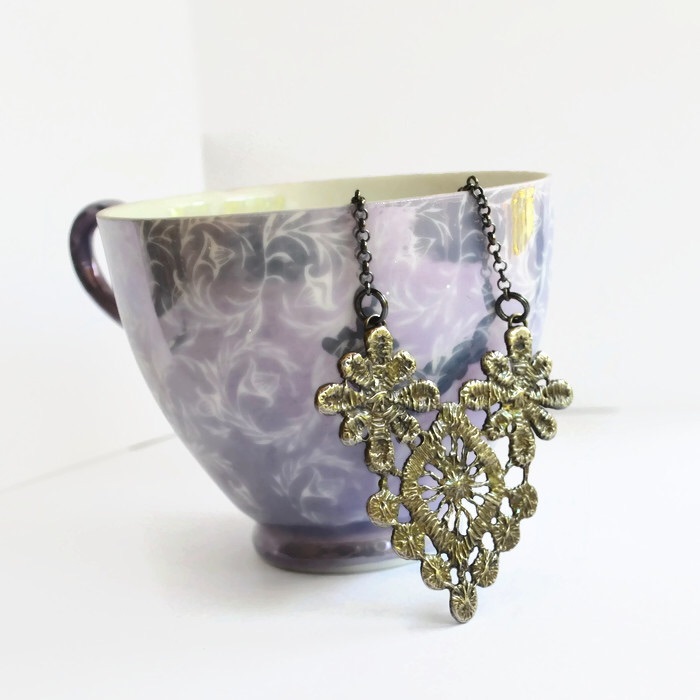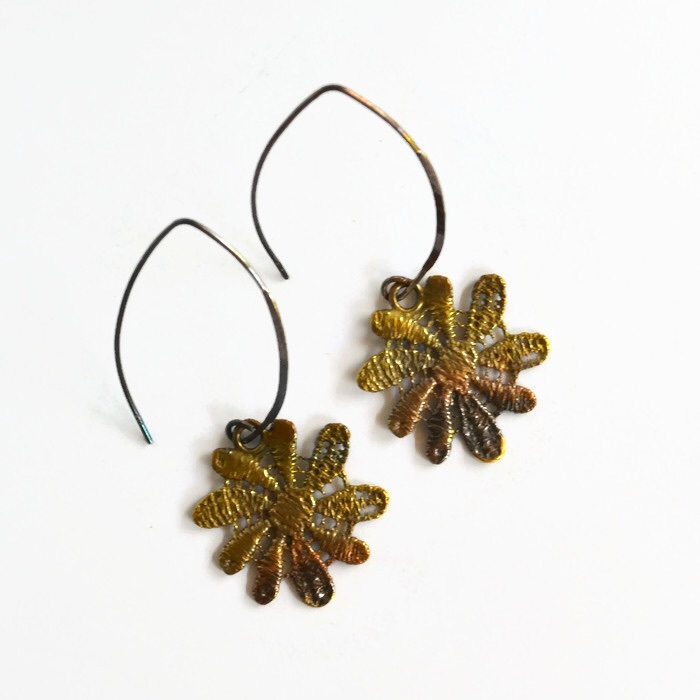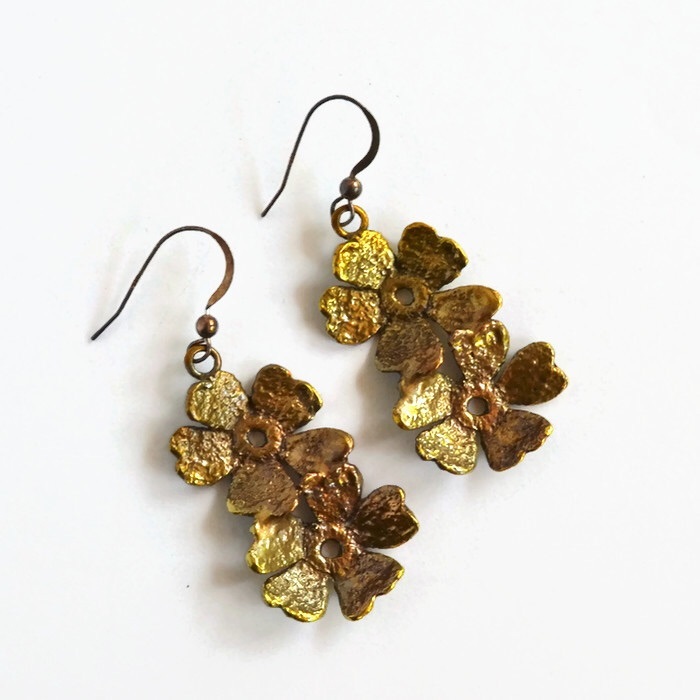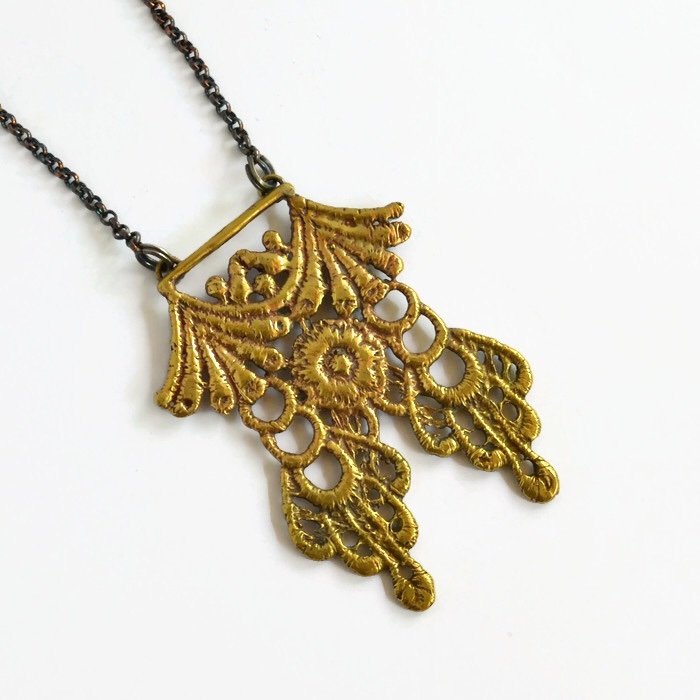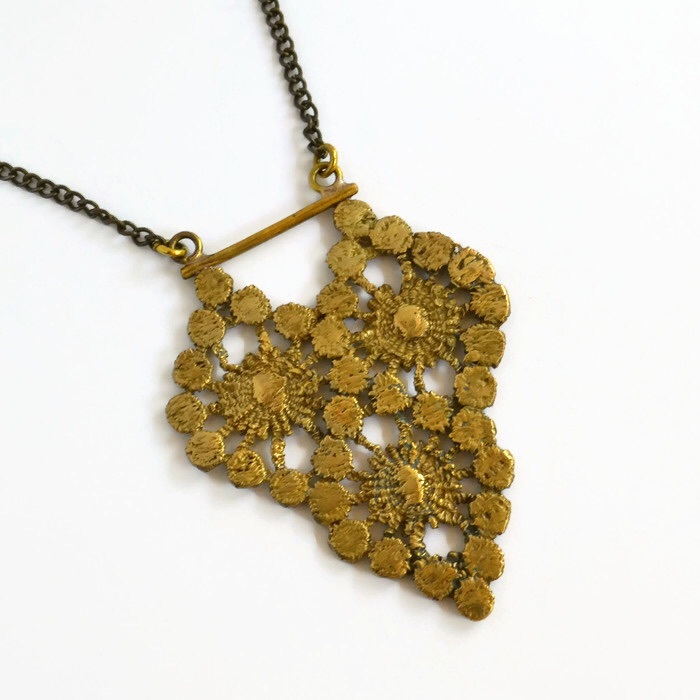I use the lost wax casting method to cast lace in metal, mostly in brass but also in sterling silver. I have a background in ceramics and did a lot of clay casting in plaster of paris molds. There are similarities in the processes and it wasn’t too difficult to switch but I’m still learning with every casting session. I prefer casting the lace pieces directly in metal without making a mold. The lace appliques are destroyed in the process and I’ll only make a mold if its a rare vintage piece of lace. It’s very tricky as lace is very delicate and thin sections burn out and detail are lost. In the beginning I discarded castings where thin sections didn’t cast but now I believe that it is the raw, organic look of these lace castings which are making them unique and beautiful.
Your lace pieces are lovely. I have done a few pieces casting in lace with mixed results. I’ve had better success casting difficult things like lace and organics if I go over the lace from the back and strengthen the more delicate bits with wax to make them a bit thicker.
Janet Kofoed
Thank you. I dip the lace pieces in molten wax to strengthen the delicate fibres and then remove excess wax by putting the lace between 2 sheets of paper towel and ironing it. If the wax is too thick, detail will be lost and the piece will be heavy when cast in metal.
That’s how I did it too. I love the way lace looks in metal, and I had completely forgotten about it until i saw your pieces.
Janet
Beautiful work,
I haven’t seen this done for years.
We used to have fellow send over Rhinoceros beetles from Africa, stored in formaldehyde (50 years ago… try doing that now…)
After the burnout, we would cool the flasks to room temp. Very gently blow air onto the flask to remove ash & debris. Re-heat very slowly… and cast in bronze.
We had a pretty good success rate.
The principle is the same.
Great job,
Jim
Thank you, Jim. I’m curious to know if the beetle castings were used to make jewellery? I do the same when I’m casting twigs, it works really well.
hi,
It’s been a while …
My memory has these being mounted on bases ? Used for display. We did a number of other “bugs” for this fellow as well, l was Really taken by the size of the beetles.
I’d guess the formaldehyde altered the organic structure of the beetle too.
I vaguely remember we had to
Let them sit for several weeks ( drying out most likely).
Best,
Jim
Lesson… Don’t write when you’re tired …
Then have to edit the next day…
My experience of casting with organics is that most burn out sufficiently so that ash does not really affect the quality of the casting. In my case I give an extra hour of soak time at 650C in my burnout cycle.This has been my experience working with leaves and seed pods.
I haven’t tried casting rhinoceros beetles yet although they are quite common here. I think it would be important to completely fill the internal cavity with wax before investing, particularly if you vacuum the investment. Otherwise the beetle is likely to burst and/or fill with investment.
The work with lace look interesting. I will have to try it when I can think of a way to incorporate it into my work.
